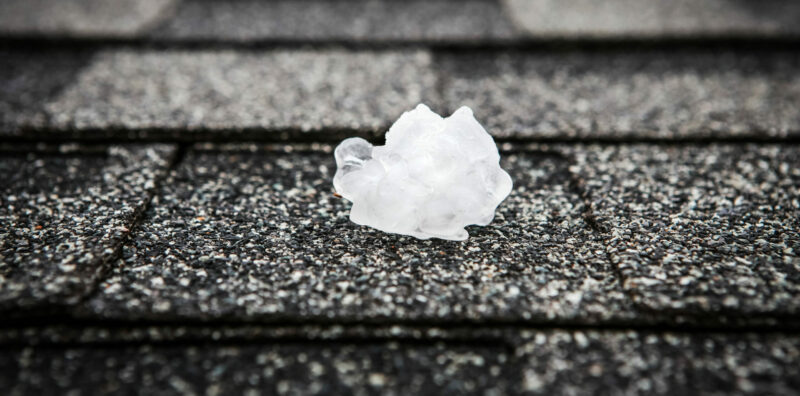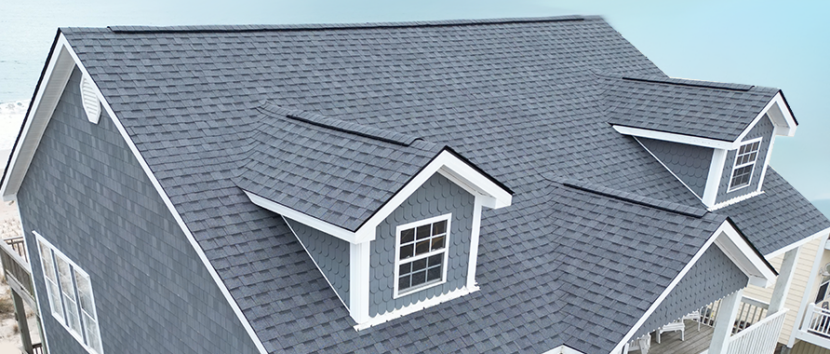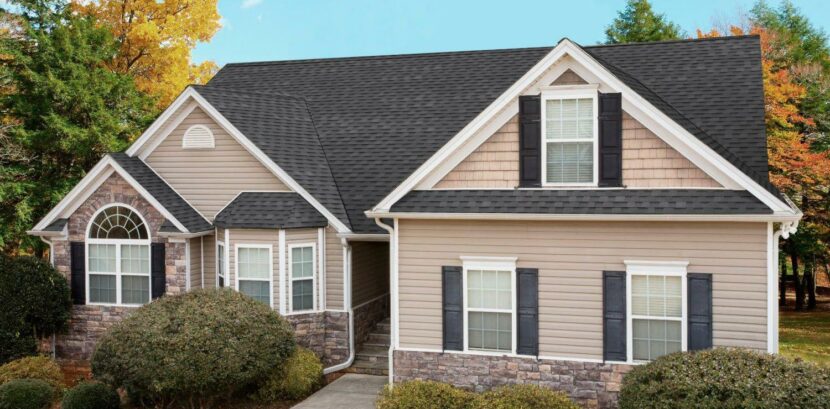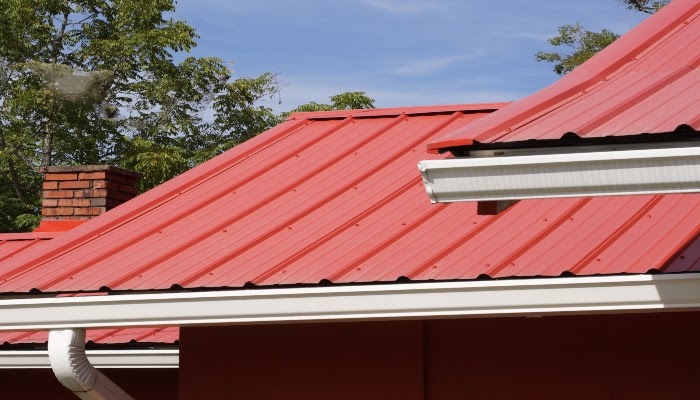Hail Damage Roof Repair – What You Need to Know

When spring gives way to summer, Hail Alley endures some of its harshest precipitation, so roofing emergencies often become a daily occurrence. Major storms can cost up to $700 per square foot in roofing repairs alone, but hail damage isn’t as straightforward as you might like.
High winds and ice don’t always cause obvious symptoms. They can weaken your shingles’ seal integrity invisibly. Left untreated, that imperceptible destruction can leave your home unprotected the next time a storm blows off your shingles and exposes your roofing. One loose shingle quickly becomes several when others tear off in the chaos.
Leakage is swift to follow, so many homeowners have to replace their roofing after just one hail storm. Hail roof repair can become expensive in a number of different ways, and not all of them entail shingle damage.
When One Shingle Means A Full Roof Repair Job
Once the last hailstone has passed, homeowners in the Midwest get to work repairing hundreds of millions of dollars in damage every year. Hail is one of Mother Nature’s most destructive habits, drawing over $50 billion in hail loss insurance claims every few years.
In 2019 alone, over seven million homes were affected by hail damage, and not all of those losses come from the hail alley states. Even so, your roof might not reveal its greatest losses straight away. You can spot the signs through:
- Dark or blackened hail hits.
- Granule loss.
- Shiny asphalt.
- Soft or bruised hail hits. Hail spatter might be soft, but it can cause significant destruction in driving wind.
- Split and browning shingles.
- Dents and impact marks, particularly on metal roofing.
- Blisters and flakes.
Ice isn’t always the most destructive part of a hail storm. Wind speed and sudden changes in gale direction can add to the severity of hail impacts. The shape of hailstones is just as influential. Smooth stones can cause invisible weaknesses that are tougher to identify than overt roof punctures.
Hail Damage to Shingles
If your shingles are old, they’ll attract far more damage than a younger roof might, so history is an important factor when deciding whether to replace your roof. Storm wind damage reveals itself through:
- Slim lines an inch away from the shingles above them.
- Loose seals.
- Missing shingles.
- Divots around the edge of your shingles.
- Granules collecting around the bottom of your downspouts.
- Roof deck debris.
- Cracks in slate roofing.
Your shingles are only as strong as the seals between them, so even the subtlest symptoms can signal a serious problem. Not all damage is visible from the ground, but if your siding, windowsills, and casings are showing impact signs, your shingles are probably damaged as well. That’s why roofers often check decks and painted surfaces before climbing onto your roof.
Roof falls cause more fatal injuries than any other construction accident, so inspecting your own roof from up high is too hazardous to risk, particularly without the right equipment. Only a trained eye can spot every sign of shingle damage required to file an insurance claim, so it’s best to rely on a professional.
Deciding Between Repair or Replacement
Hail roof repair might be cheaper than replacement in the short term, but it can become more expensive in the long run. There is, nonetheless, no easy answer to the repair-vs-replacement question. A new roof might be worth saving, but if your shingles are already showing signs of aging, a replacement is probably more cost-effective. Similarly, if your roof is already leaking, it could be difficult to track down the cause.
If your leaks worsen after a storm, a replacement can save you from wood rot, ceiling damage, and wet insulation. Of course, the extent of the damage matters, too. Mere aesthetic damage, moss, and algae might be fixable, but curled, dented, or corroded shingles are signs that your roof has lost its structural integrity. Other important considerations include:
- Your geographical region. If you live in hail alley, your roof needs to provide robust preventative protection, so even minor leaks or seal loss are serious problems.
- The cost of hail roof repair. Repair is never as effective as replacement, so expensive fixes are often money-wasters.
- How widespread the damage is. If breakage is isolated to just one area, it might be worthwhile to repair rather than replace.
- How far you are from a home resale. If you’re planning to sell your property, a new roof amplifies your curb appeal and therefore its return on investment.
The United States suffers 4,600 serious hail storms every year, enduring hailstones of up to 4.83 inches in diameter. Still, even small pieces of ice can break your shingle seals and require a full roof replacement, so it’s best to schedule a professional assessment after severe storms. Doing so could save you from even more expensive indoor damage.
Need help with your roof? Feel free to contact 1-800-HANSONS for a free roofing estimate.
Get a Free Estimate Today
70% off installation. Special financing available. See details.













